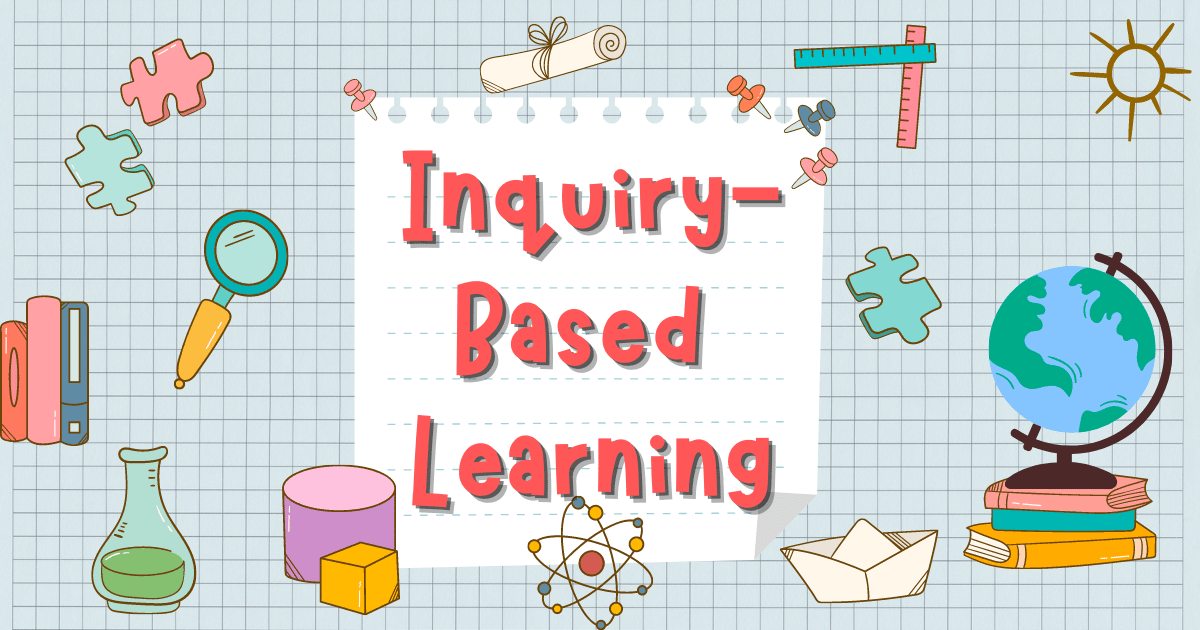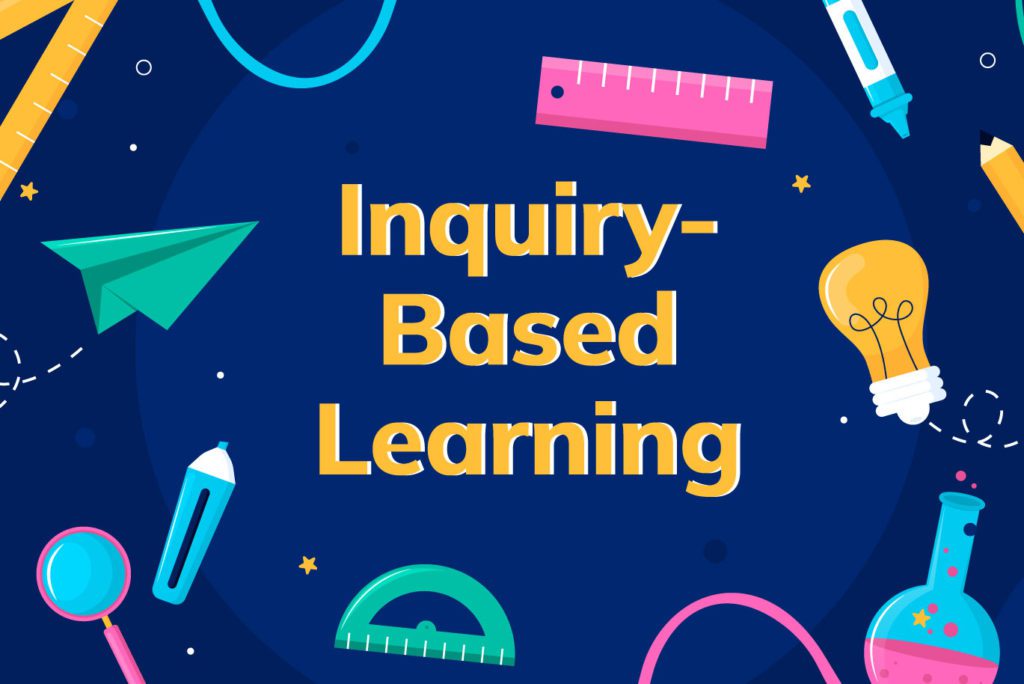In today’s fast-changing world, memorizing facts is no longer enough. Students must learn how to ask questions, investigate problems, and think independently. This is where Inquiry-Based Learning (IBL) comes in—a student-centered teaching method that encourages curiosity, exploration, and deep understanding.
Instead of just delivering information, inquiry-based learning challenges students to ask their own questions, conduct research, experiment, and form conclusions. This approach mirrors real-world problem-solving and prepares students for higher education, careers, and lifelong learning.
In this guide, we will explore:
- What is Inquiry-Based Learning?
- The core principles of IBL.
- Types of Inquiry-Based Learning.
- Strategies for implementing IBL in the classroom.
- Challenges and solutions in inquiry-based education.
- The future of learning through inquiry.
What Is Inquiry-Based Learning?

📖 Definition of Inquiry-Based Learning
Inquiry-Based Learning (IBL) is a teaching approach that puts students in charge of their learning by encouraging them to ask questions, investigate, and discover solutions rather than simply memorizing information.
Instead of being passive learners, students become active researchers who:
- Formulate questions and hypotheses.
- Investigate topics using multiple resources.
- Analyze evidence and draw conclusions.
- Communicate their findings and reflect on the process.
📌 Why It Matters:
- Enhances critical thinking and problem-solving skills.
- Encourages independent learning and intellectual curiosity.
- Prepares students for real-world challenges and careers.
- Makes learning engaging, meaningful, and personalized.
📌 Example: Instead of a teacher explaining climate change, students explore why global temperatures are rising, research evidence, and propose solutions to reduce carbon footprints.
Core Principles of Inquiry-Based Learning
🔍 1. Student-Driven Learning
Students take the lead in asking questions and exploring topics.
Teachers act as facilitators, not just instructors.
📌 Example: A history teacher gives students a primary source document and asks, “What do you notice? What questions do you have?” instead of explaining its significance.
💡 2. Encouraging Curiosity & Deep Thinking
Students explore real-world problems rather than just memorizing facts.
Focuses on “how” and “why” questions rather than just “what”.
📌 Example: Instead of teaching Newton’s Laws through lectures, students experiment with objects, record observations, and derive principles on their own.
🧩 3. Hands-On, Experiential Learning
Encourages experiments, projects, and interactive activities.
Students learn by doing, testing, and reflecting.
📌 Example: In a biology class, students grow plants under different conditions to understand photosynthesis instead of just reading about it.
🗣 4. Collaborative Exploration & Discussion
Encourages students to discuss, debate, and share ideas.
Learning is social and interactive.
📌 Example: In literature, students analyze a poem in small groups, debate its themes, and present interpretations instead of listening to a single lecture.
Types of Inquiry-Based Learning
There are different levels of inquiry, depending on how much guidance the teacher provides.
1️⃣ Structured Inquiry 🏗 (Teacher-Guided, Student-Explored)
Teacher provides the question and materials, but students investigate and find answers.
✔ Best for introducing IBL to beginners.
📌 Example: The teacher asks, “How does light affect plant growth?” and provides plants and tools, but students design the experiment and analyze results.
2️⃣ Guided Inquiry 🧭 (Student-Driven, Teacher-Supported)
✔ Teacher provides the problem, but students develop their own methods and solutions.
✔ Encourages collaborative learning.
📌 Example: A geography teacher asks, “Why do some cities grow faster than others?” and students research, analyze population data, and present findings.
3️⃣ Open Inquiry 🚀 (Completely Student-Led)
✔ Students create their own questions, research, and experiment independently.
✔ Best for advanced students and project-based learning.
📌 Example: Students choose their own topic, such as “How can we reduce plastic waste in our school?”, and conduct independent research and experiments knowledge.
4️⃣ Problem-Based Learning (PBL) 🏆 (Solving Real-World Issues)
✔ Students investigate complex, real-world problems.
✔ Often involves multidisciplinary research and teamwork.
📌 Example: Students explore how to improve access to clean water in developing countries and propose sustainable solutions.
Strategies for Implementing Inquiry-Based Learning in the Classroom
1. Encourage Students to Ask Questions
- Use open-ended questions that require critical thinking.
- Teach students to generate “how,” “why,” and “what if” questions.
📌 Example: Instead of “What is gravity?” ask “How would life be different if gravity was weaker?”.
2. Use the Inquiry Cycle
Students follow a structured process to develop their learning:
1️⃣ Ask – Formulate questions.
2️⃣ Investigate – Research, experiment, and gather data.
3️⃣ Analyze – Interpret results and draw conclusions.
4️⃣ Communicate – Share findings through presentations or reports.
5️⃣ Reflect – Evaluate what was learned and how to improve.
📌 Example: In science, students test water quality in their area and create reports on pollution levels.
3. Integrate Technology & Digital Tools
✔ Use virtual labs, simulations, and online databases for research.
✔ Encourage students to create multimedia presentations.
📌 Example: Students use Google Earth to study deforestation patterns over time.
4. Encourage Collaboration & Peer Discussion
✔ Use group research projects, peer debates, and think-pair-share activities.
✔ Encourage students to challenge each other’s ideas and refine their thinking.
📌 Example: In an ethics class, students debate whether AI should make medical decisions.
5. Allow Student-Choice & Real-World Applications
✔ Let students choose topics based on their interests.
✔ Encourage them to apply learning to real-world problems.
📌 Example: Students research local environmental issues and design campaigns to raise awareness.
Challenges & Solutions in Inquiry-Based Learning
1. “Students Aren’t Used to Inquiry Learning”
✔ Solution: Start with structured inquiry and gradually increase student responsibility.
2. Requires More Time Than Traditional Teaching
✔ Solution: Integrate inquiry learning into existing subjects rather than adding extra projects.
3. Teachers Need Training in Inquiry-Based Methods
✔ Solution: Provide professional development and resources for educators.
The Future of Inquiry-Based Learning
- AI & Virtual Reality – Simulated experiments and real-world problem-solving.
- Interdisciplinary Inquiry – Combining science, technology, history, and ethics.
- Global Collaboration – Students working with peers worldwide on shared problems.
📌 Example: Future students may collaborate on climate change projects with international teams using AI-driven research tools.
Conclusion: Inspiring Lifelong Learners
Inquiry-Based Learning transforms education into an exciting, student-driven experience. By encouraging curiosity, critical thinking, and problem-solving, IBL prepares students not just for exams, but for the real world.
💬 What are your thoughts on inquiry-based learning? How can schools encourage more student-driven inquiry? Share your ideas below! 🔍📚✨



